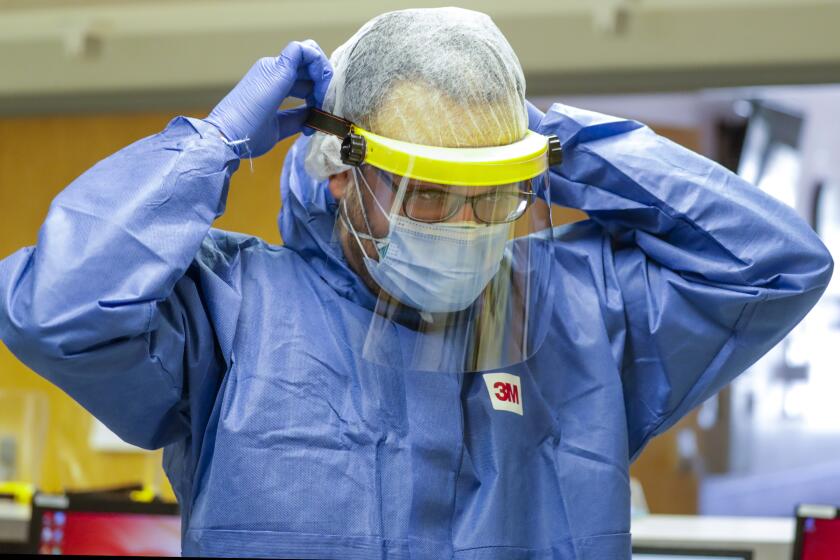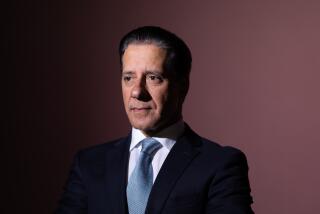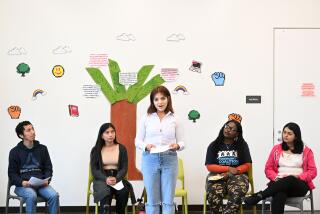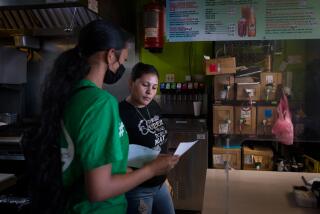Inspired by essential workers, young brothers use a 3-D printer to make face shields

- Share via
During the early stages of the COVID-19 pandemic in the United States, Zubin and Tenzing Carvalho were on high alert. The two brothers from Hemet, ages 14 and 12, come from a family of healthcare workers, many of them in New Jersey and New York, two of the hardest hit states at the time.
Some relatives got COVID-19 and recovered, but their great-uncle and great-aunt, who were older and had underlying health conditions, didn’t make it.
For the record:
11:00 a.m. Aug. 14, 2020An earlier version of this story incorrectly said the UC San Francisco face shield project was approved by the Food and Drug Administration. The project complies with FDA guidelines.
So the brothers decided to do something.
Their dad, Dr. Gerard Carvalho, is chief of surgery at Hemet Global Medical Center, and their grandparents are primary care doctors in West Covina. From them, the brothers knew what the battle looked like on the frontlines, and wanted to make sure their family members and other healthcare workers were as protected as possible.
Tenzing and Zubin are members of a robotics team at Western Center Academy, a STEM-focused school in Hemet. They began using their robotics team’s 3-D printer to make face shields for healthcare workers in their family, Filipino Americans from New York, New Jersey, Chicago, the Bay Area and Southern California. They soon realized there was a high demand for personal protective equipment at hospitals, nursing homes and schools in their community, and reached out to robotics teams at other schools to expand their project.
Now we have the kids taking care of us.
— Andy McGuire, purchasing director, Hemet Unified School District
Since February, they have enlisted students from seven high schools and eight elementary schools to produce more than 12,500 face shields. Their group, SoCal Face Shields for Frontline Workers, has made donations to the Navajo Nation, more than 50 medical clinics, food and service workers at the Veterans Administration Loma Linda Healthcare System, grocery stores and postal workers. Next, they’ll be providing 1,600 face shields for election workers at 120 “vote centers” in Riverside County in November.
“It feels wonderful to help people, especially frontline workers, knowing that they’re risking their lives every day at work, helping COVID patients and helping the community,” said Zubin.
“We’re just kids, but nowadays you have the opportunity to help people in many different ways,” said Tenzing.
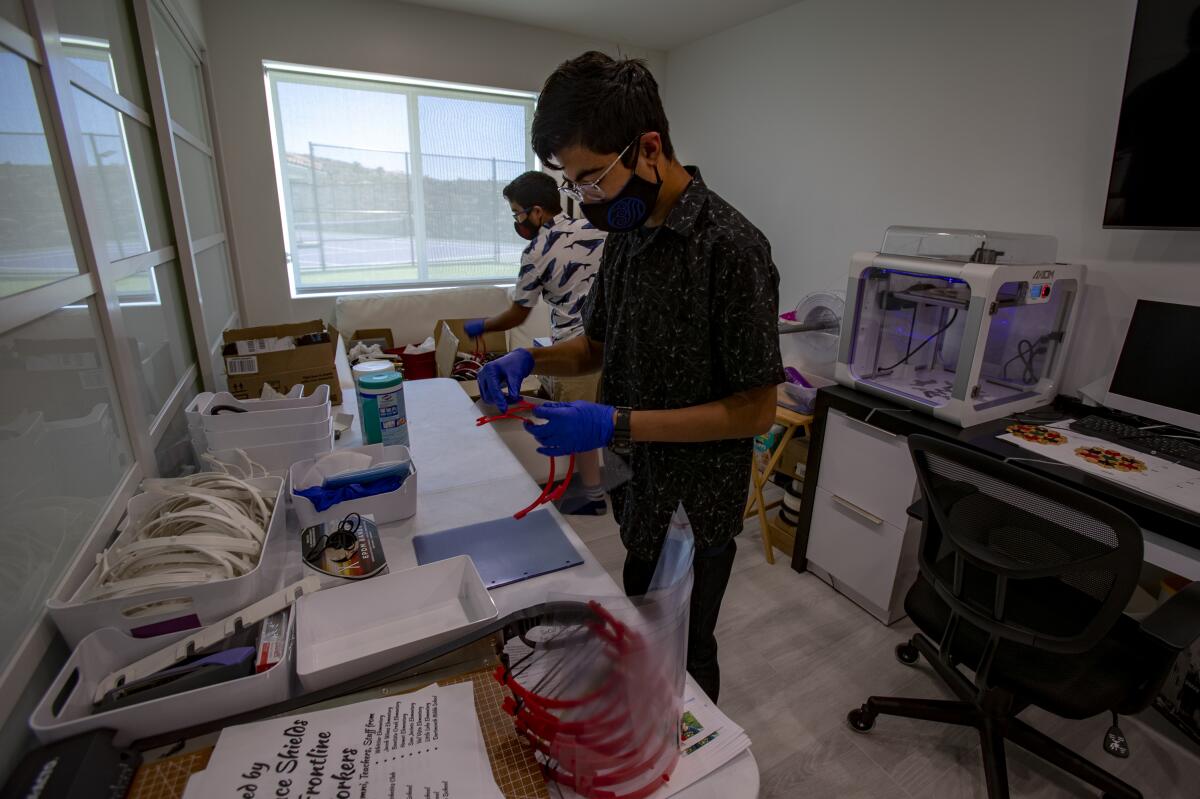
Each face shield takes three hours to make, and the boys often print for 15 hours a day. Using the design from the UC San Francisco face shield project, which complies with Food and Drug Administration guidelines, they print the shield frames from their living room at home. These face shields are reusable, and the transparency film can be changed easily and linked with rubber bands, a more accessible material than buttonhole elastic.
Making the shields at home came with complications. At first, they used a three-hole punch to manually create attachment points on the head strap for the actual face shield, getting blisters in the process. It wasn’t until they reached out to Hemet Unified School District’s purchasing director, Andy McGuire, that they found a better method to make holes in the tough plastic. Now, they use the school district’s drill press to punch through 200 sheets at a time.
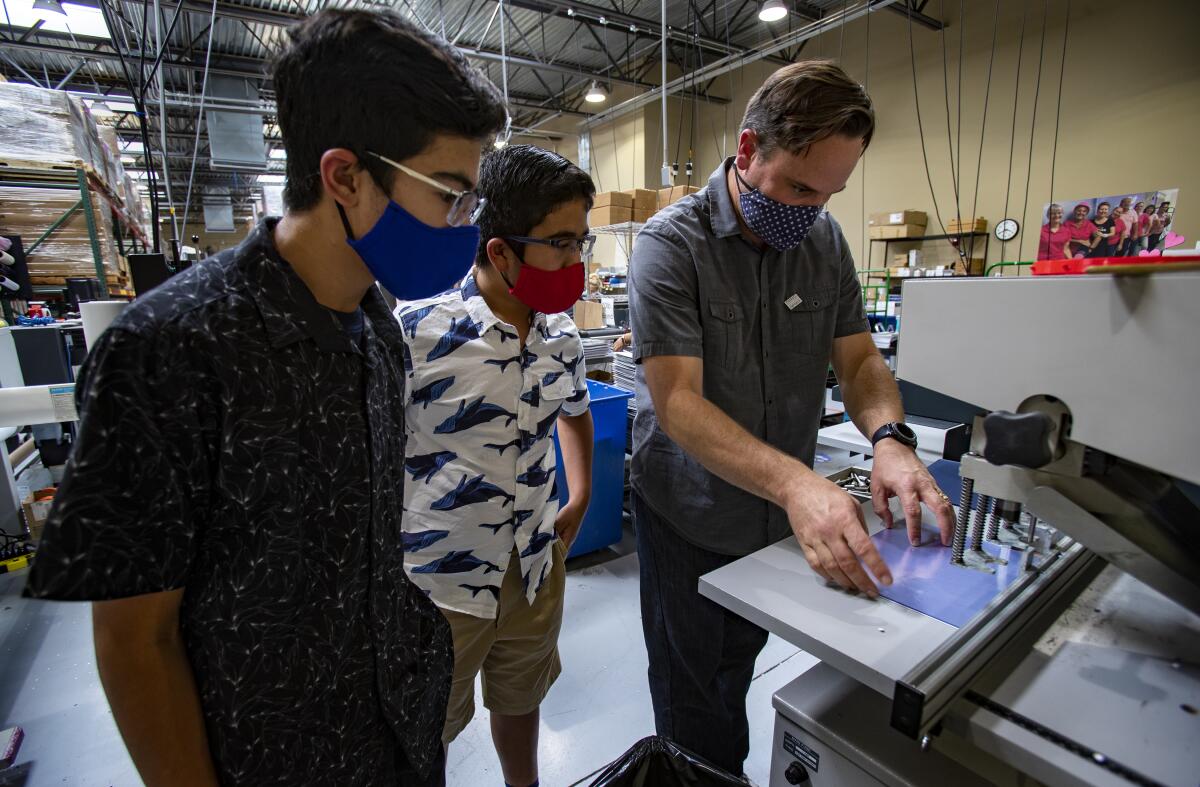
The Carvalhos donated 2,600 face shields for the teachers, aides, cafeteria workers, special education classes, administrators and custodial staff who may work on campus during the remote-learning school year.
“For them to be able to prop us up and help us get through this has been so heartwarming,” said McGuire, who was responsible for procuring PPE for staff and students in 26 schools. “We were working hard to provide all the things we needed for [school lunches] and things of that nature to our students, and then these two young men showed up, and it was such a role reversal. Now we have the kids taking care of us.”
Paul Bailey, principal of Western Center Academy, said he is proud of his students for taking initiative to help others during the pandemic.
“They’re incredibly motivated kids who are willing to wrap their heads around problems and to see what resources are available,” he said. “They want to do what they can to be able to apply their resources, their knowledge, their drive and their passion to help those around them.”
It’s harder to touch your face if you have a plastic barrier on it, experts say.
While other students at the academy have worked on similar projects to help frontline workers, Tenzing and Zubin have “ramped up the capacity and taken things to a whole new level,” Bailey said.
The Carvalhos had planned to go on vacation in Italy and take classes during their summer break, but don’t complain about their canceled plans.
“We didn’t expect things to end up this way, but we’ve ended up helping many people, and it’s been an awesome experience,” Tenzing said.
More to Read
Sign up for Essential California
The most important California stories and recommendations in your inbox every morning.
You may occasionally receive promotional content from the Los Angeles Times.
